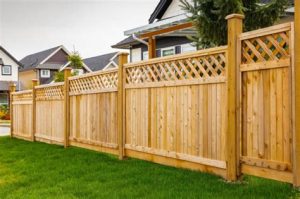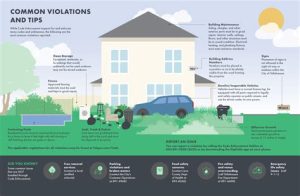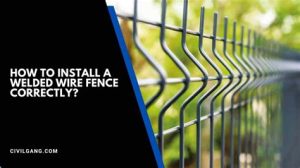Explore essential factors for property development: zoning regulations, property boundaries, material durability, budget constraints, and permit processes for successful projects.When it comes to enhancing the safety and aesthetics of your property, choosing the right fencing material is crucial. However, it’s not merely a matter of selecting something that looks good; several key factors must be considered to ensure your fence meets legal requirements and stands the test of time. From local zoning regulations and understanding property boundaries to assessing the durability of materials and budgeting wisely, each aspect plays a significant role in your fencing project. Additionally, navigating the often complex permit requirements can be daunting. In this blog post, we will explore these critical considerations to help you make informed decisions, ensuring your fencing choice is not only beautiful and functional but also compliant with local laws and regulations.
Local Zoning Regulations
When planning to install a new fence, one of the most crucial considerations is understanding local zoning regulations. These regulations vary widely depending on your location, and they determine what types of fences you can build, their height, materials, and even their placement on your property. Typically, local zoning laws aim to maintain the aesthetic value of neighborhoods and assure that fences do not become obstructions or cause disputes among neighbors.
Before you start your fence project, it’s essential to check with your local zoning office or homeowners’ association (HOA) if you reside in a community governed by specific rules. You may find that there are setback requirements, which require fences to be a certain distance from property lines or sidewalks. Not adhering to these regulations may lead to significant setbacks, including the removal of your fence.
Another important aspect of local zoning regulations is the distinction between residential and commercial areas. Depending on your zoning designation, there may be different restrictions on fence height and materials. For example, a residential area may allow wooden privacy fences while a commercial zone might permit only wrought-iron fencing to ensure visibility and safety. It’s imperative to consult your local zoning bylaws or a knowledgeable contractor to ensure compliance.
Understanding Property Boundaries
Understanding property boundaries is crucial for homeowners, especially when considering the installation of a fence. Knowing where your property ends and your neighbor’s begins can help avoid potential disputes and ensure compliance with local zoning regulations.
Property boundaries can be determined by several methods: a land survey, referring to the property deed, or looking for existing markers like fences or trees. A land survey is the most accurate way to determine your exact boundaries, as it involves a professional measuring your land based on historical records and legal documents.
Additionally, it is essential to check with your local government to understand any setback requirements or easements that may affect where you can place a fence. These regulations can vary significantly by location, affecting your choice of fencing materials and design. In summary, clarifying property boundaries is a critical step in successfully planning your fencing project.
Material Durability and Maintenance
When choosing the right materials for your fence, durability and maintenance are paramount considerations. Different materials offer varying levels of resilience against weather conditions, pests, and general wear and tear. Understanding the longevity of each material can save you time, effort, and money in the long run.
| Material | Durability | Maintenance |
|---|---|---|
| Wood | Moderate – susceptible to rot and insects | Requires regular staining or sealing |
| Vinyl | High – resistant to fading and cracking | Low maintenance – occasional cleaning required |
| Chain Link | High – durable and weather-resistant | Low maintenance – occasional rust treatment |
| Aluminum | High – corrosion resistant | Low maintenance – wash as needed |
Understanding the maintenance needs of your chosen fence material is vital. Some materials, like wood, require more frequent upkeep to maintain their appearance and integrity, while others like vinyl or aluminum can be largely forgotten once installed.
Cost and Budget Constraints
When deciding on the materials for your fence, it is crucial to consider the cost and budget constraints associated with your project. Multiple factors can influence the overall expense, including the type of materials chosen, the size of the fence, and any additional features you might want to incorporate.
- Material Selection: Different materials come with varying price tags. For example, vinyl fences tend to be more expensive than wood, but they may require less maintenance over time.
- Size and Length: The total perimeter you wish to fence will directly impact your costs. Larger areas will naturally require more materials, increasing overall expenses.
- Labor Costs: If you’re hiring professionals for installation, labor costs can add up quickly. It’s a smart move to get estimates from multiple contractors to find the best deal.
Additionally, you should account for any unanticipated expenses. It is wise to set aside an extra 10-20% of your budget for these variances. Unexpected costs can arise due to issues like uneven terrain or the need for specific permits depending on your local regulations.
Permit Requirements and Application Process
When planning to install a fence, understanding the permit requirements is crucial. Many localities mandate permits for any fence installation, particularly if the fence exceeds a certain height or is made of specific materials. Failing to secure the appropriate permits can lead to fines or the necessity to remove the fence entirely.
The application process typically involves submitting detailed plans that outline the fence’s design, materials, and exact location on your property. It’s vital to check with your local zoning office or building department to obtain the precise requirements for your area. Some places may require a survey of your property to confirm property boundaries, which can add time and cost to the project.
Additionally, it’s important to be aware of any homeowners’ association (HOA) rules if you live in a community governed by an HOA. They may have their own guidelines that dictate not only the permitting process but also the style, color, and materials permissible for fences. Ignoring these rules can result in more than just fines—you may be asked to remove or alter your newly installed fence.
Frequently Asked Questions
What are the most popular materials for fencing?
The most popular materials for fencing include wood, vinyl, metal (like aluminum and wrought iron), chain link, and composite materials.
How do I determine the best fencing material for my property?
Consider factors like your budget, the purpose of the fence (privacy, security, aesthetics), the climate, and maintenance requirements when choosing a material.
What permits might I need for installing a fence?
Permit requirements can vary by location; generally, you may need a building permit or a zoning permit. Check with your local government or homeowners association for specific regulations.
Are there environmental considerations when choosing fence materials?
Yes, consider using sustainable materials like bamboo or reclaimed wood, and check if the materials used have a low environmental impact or are recyclable.
Can I install a fence myself, or should I hire a contractor?
This depends on your skill level and complexity of the project. Simple fences can be DIY, while complicated designs might require professional installation.
What are the ongoing maintenance requirements for different fence types?
Wood usually requires staining or painting every few years, vinyl can be washed but is low maintenance, metal may need rust-proofing, and chain link is generally low maintenance.
How can I ensure my fence complies with local regulations?
Research your local zoning laws and building codes, contact your local government office, or consult with a fencing contractor to ensure compliance.




